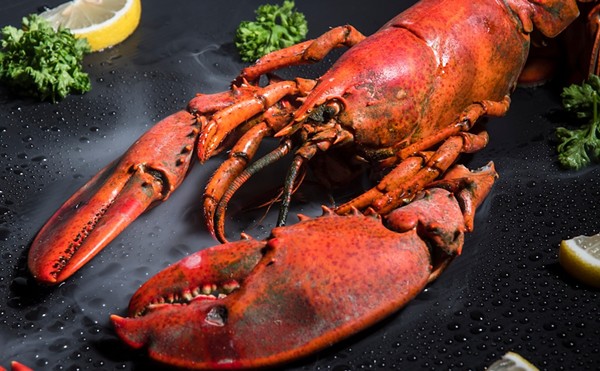|
Not the band, but the food Many Mexican Americans venerate Menudo, the most revered and the most feared dish in the Tex-Mex lexicon, not only because they grew up it, but also because it is one recipe that truly belongs to them. America might have embraced tacos and enchiladas (and totally subverted salsas), but menudo remains a mystery. It is feared because it contains tripe, and Americans don't knowingly eat tripe. Americans also don't traditionally eat soups in the morning. But menudo, the original "breakfast of champions" has acquired folkloric status equivalent to that of chicken soup. It is, in the minds of many, the cure of choice for the common crudo, or hangover to you, gringo. Perhaps for this reason alone, it's a common, early-morning or late-night street food in much of Mexico, especially in the north where its restorative powers are particularly appreciated. The major ingredients in menudo aren't sitting on every suburban supermarket shelf. Hominy, which is sometimes omitted, comes the closest to being readily available, and the canned form is grudgingly acceptable. Honeycomb tripe, the muscular lining of the second stomach of a cow, also figures in dishes of other cultures, such as the French tripe à la mode de Caen, and is also occasionally found - often accompanied by a "what the hell is that?" response among menudo rookies.
And then there's calf's foot. Although this is not an ingredient that appears in identifiable form in the soup (often removed before serving, it's used more for flavor and as a kind of gelatinous thickener), it's one more reason most Americans are likely to shun the soup. My advice: Get over it. Yet, all of this, in fresh and frozen form, including a frozen package that mixed tripe and pig's trotter, a frequent substitute for the cow's foot, was available at a Southside H-E-B. I even came across a whole pig's head while exploring the freezer chest. The fresh tripe isn't as pre-prepared as many recipes suggest it will be, requiring more cooking and perhaps rinsing, but apart from convenience, that's a minor issue. Spicing isn't a problem, either; Bolner's Fiesta brand produces a packaged menudo mix that's presumably tuned to local expectations. So why not give tripe a try? Here's a recipe that's a compilation of five sources: Rick Bayless, Elizabeth Lambert Ortiz, Diana Kennedy, Jim Peyton, and Marilyn Tausend. 2 lbs fresh beef tripe Wash the tripe thoroughly in several changes of warm, salty water. Next, it can be "scrubbed" by sprinkling with salt and lemon juice and rubbing the mix into all sides. Marinate for 30 minutes and rinse. (The tripe may also be soaked in vinegar and water for 3 hours or so.) Cook either whole or in chunks or strips, in water to which 1/2 cup or so of vinegar has been added. Cook for 5 to 10 minutes; drain. Return tripe to pot (you may slice it now if you haven't already) with the calf's foot, bring to a boil, skim any foam, reduce heat, and simmer for a few minutes before adding the garlic, onion, and spices (individually measured or the equivalent amount from the packet of Bolner's Fiesta). Cook at a bare simmer for two hours or so. Add the canned pozole and any seasoning that now seems necessary. Simmer for an additional 30 minutes, or until the tripe is tender. Remove the calf's foot from the broth and, when it is cool enough, cut away any meat and return it to the pot. Give the foot the boot. Serve with the following condiments in small bowls to pass: 2 small limes, quartered, 1/2-1 cup chopped white onion, lots of dried oregano, 1 T or so powdered chile such as chile pequin. San Antonio has no shortage of sources for eat-in or take-out menudo if all this seems like too much work. I took home a container from El Chilaquil on West Commerce only to find the hooves were still in the container (from the size, I suspect pig), the tripe had been cut into pieces about 1-inch square, and there was indeed hominy. In addition to looking appealingly rusty-red, it all tasted pretty good. Spicy, but not too much so, fatty, but in moderation - and maybe just the ticket for the morning after. •
|
Tags:

KEEP SA CURRENT!
Since 1986, the SA Current has served as the free, independent voice of San Antonio, and we want to keep it that way.
Becoming an SA Current Supporter for as little as $5 a month allows us to continue offering readers access to our coverage of local news, food, nightlife, events, and culture with no paywalls.
Scroll to read more Flavor articles
Newsletters
Join SA Current Newsletters
Subscribe now to get the latest news delivered right to your inbox.













